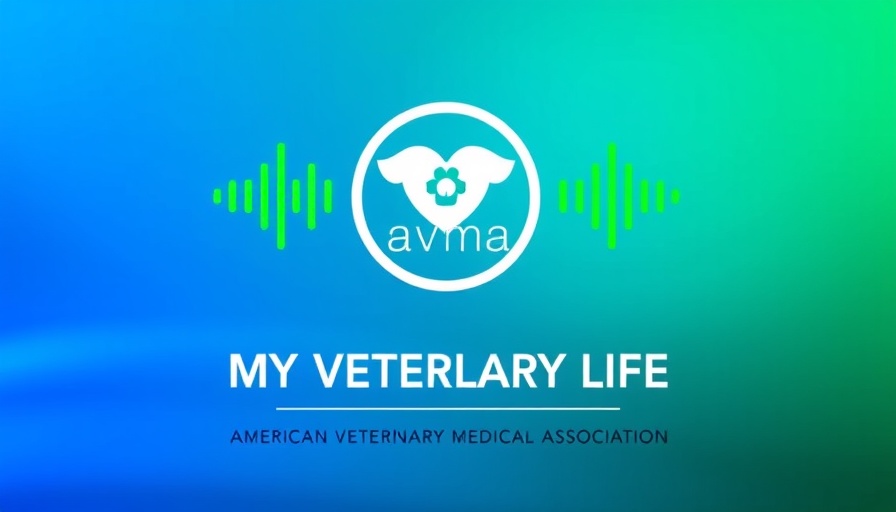
Veterinary Podcast Crossover: A New Era for Pet Care Enthusiasts
In the world of pet care, community and collaboration are key. As pet owners, veterinarians, trainers, and pet healthcare professionals, we thrive on sharing knowledge that enhances the well-being of our furry companions. That's why the new Veterinary Podcast Crossover Series featuring the Have You Herd? podcast is making waves. This series symbolizes a growing trend in veterinary communication—merging insights from different experts to create a multidisciplinary approach to animal care.
Bridging Gaps Through Shared Experiences
This crossover series invites listeners into discussions that range from healthcare innovations to cultural insights in veterinary practices. One of the standout episodes features Dr. Fred Gingrich, the executive director of AABP, delving into support for rural veterinary colleagues. Such collaborations provide valuable perspectives in enhancing veterinary services, especially for underserved communities. This effort highlights how essential dialogue can bridge gaps in understanding and service delivery, fostering a richer environment for pet care professionals.
Taking Action: How This Crossover Influences Practices
By sharing their stories, various veterinary podcast hosts contribute to an expansive narrative around pet care. For example, Dr. Kendra Wells, featured in another enlightening discussion, emphasizes the importance of cultural awareness when working with diverse communities. Her episode urges veterinarians to embrace language learning as a means to connect with Latinx livestock caretakers—it's a lesson that holds true even for urban animal medicine. Understanding diverse backgrounds not only enriches veterinary practice but also enhances the pet owner's experience.
Connecting the Community: Why This Matters to You
As a pet owner or healthcare provider, tuning into these conversations is invaluable. It is the perfect opportunity to gain knowledge about trends and practices that may affect your pet’s health or your business. This crossover series is tailored for everyone involved in the pet care ecosystem—from retailers and distributors to trainers and shelters, fostering a sense of unity and shared purpose.
Emotional Connection: The Human Side of Veterinary Care
Underlying the technical discussions are heartfelt stories that resonate on a personal level. The @AVMAVets social media channels often share touching anecdotes from veterinary practices, reinforcing the emotional bond between caregivers and their patients. These shared experiences remind us that veterinary work isn’t just about animals; it’s about building connections within our communities.
Looking Ahead: Trends in Veterinary Podcasts
The explosion of veterinary podcasting is no coincidence. People are increasingly seeking information that is accessible, real, and actionable. As trends evolve, expect to see a surge in discussions surrounding pet health, wellness, and the latest innovations in animal care technology. This means more resources for trainers, retailers, and pet owners to enhance their practices.
What You Can Do: Engage with the Community
If you care about the future of animal welfare, now is the time to get involved. Subscribe to the Veterinary Podcast Crossover Series and explore the Have You Herd? episodes. Engage with these podcasts by providing feedback or sharing your thoughts via social media. Your voice fosters an ongoing dialogue and can lead to new initiatives that influence the veterinary landscape.
In a world where effective communication is vital, let's take this opportunity to learn and grow together. As you dive into these episodes, remember they’re not just about listening—they’re about becoming a part of the larger narrative that shapes our experience in caring for pets.
So, pet owners, veterinarians, trainers, and everyone passionate about animal health, don’t miss out on this chance to absorb insights from dedicated professionals. Explore the Veterinary Podcast Crossover Series and be part of the community revolutionizing pet care.
 Add Row
Add Row  Add
Add 


Write A Comment